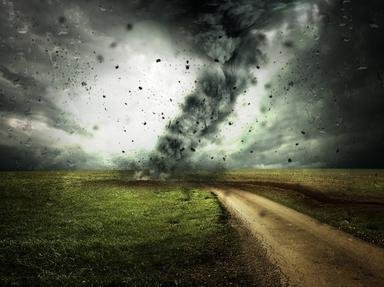Quiz Answer Key and Fun Facts
1. In 1852, the Western Reservoir was created to provide water for an area in Pennsylvania between Pittsburgh and Johnstown. Very soon after it was completed, it was abandoned by the state and eventually sold to private investors, who decided to rename it. What was the lake's new name?
2. Several people bought and sold the reservoir, and despite the dam breaking once in 1862, one owner decided to take out the drainage pipes. Because of this act, there was no possible way to drain the lake in order to make repairs on the dam. Why were the pipes taken out?
3. The South Fork Fishing and Hunting Club was formed in 1879, and later that year bought the reservoir. Members of the club were made up of some of the wealthiest and most powerful men of the area, from members of the presidential cabinet to industry leaders. Who was the richest member of the club?
4. The South Fork Fishing and Hunting Club was not content with simply owning a lake in the countryside. Most of the rich members brought yachts and sailboats in order to fish the expensive game fish brought in from elsewhere. In order to keep the fish inside the lake, they put up screens on the spillway. How would this eventually contribute to the coming flood?
5. On May 30, 1889, the Great Storm of 1889 hit Pennsylvania, playing its own part in the tragedy. Over 24 hours, the largest recorded amount of rain fell on the region at that time. How much rain did the US Army Signal Corps estimate fell on the Johnstown area?
6. By coincidence a further factor was that the people in the Johnstown area had little idea of the impact the storm would have since the paper did not run on that day. Why did the "Johnstown Tribune" not publish a paper for May 30?
7. Just after 3:00 PM, water in the South Fork Dam was almost cresting, and it burst under the pressure. An estimated 20 million tons were unleashed over the next 40 minutes. The first town to be hit was South Fork itself, but because of its elevation losses were minor. How many people were killed in South Fork?
8. As the water rushed down the Little Conemaugh River, it was slightly delayed at the Conemaugh Viaduct, but broke through after only 7 minutes. The second town in the way was Mineral Point, where there were around 30 houses. By the time the flood had passed the town, what was left?
9. The last town to be hit before Johnstown was East Conemaugh. Locomotive engineer John Hess heard a loud rumble in the distance and guessed it was a massive flood. He tied down his whistle to warn residents. While over 50 people in the town died, several more were saved due to his actions. What happened to Hess and his locomotive?
10. Many Johnstown residents died because the city was caught by surprise by the flood. However, nothing could be done to save the city itself, since the flood entered the city going as fast as 40 miles per hour and 40 feet tall. What was the total property damage in the entire area following the flood?
11. Just over 2,200 people were killed in the flood, but it was impossible to find all of the bodies. The flood washed many bodies downstream to where the Conemaugh River meets with the Kiskiminetas River, which is a tributary to the Allegheny River, which itself is a tributary to the Ohio River. How far away was the farthest body found from Johnstown?
12. A new American humanitarian organization was founded in 1881, and had primarily been used in wartime to treat the wounded. However, its founder, Clara Barton, knew it could also be used in peacetime. The Johnstown Flood became the first opportunity for the group to show its capabilities, and it did by providing food, hospitals, supplies, and hotels. What organization was this?
13. Survivors of the flood looked for some kind of retribution against the South Fork Fishing and Hunting Club, so lawsuits were brought against the club. What was the end result of the litigation?
14. Due to the results of the lawsuits, American lawmakers decided to recognize an English tort law case "Rylands v. Fletcher" to deal with similar cases in the future. What legal doctrine did this case address?
15. Despite the dam being destroyed, more natural floods occurred in later years, and are likely to continue. In 1894, 1907, 1924, 1936, and 1977, major flooding hit the area. The 1936 flood also happened around a major holiday and contributed to the Great Pittsburgh Flood of 1936, which is also known by what name?
Source: Author
illiniman14
This quiz was reviewed by FunTrivia editor
bloomsby before going online.
Any errors found in FunTrivia content are routinely corrected through our feedback system.

